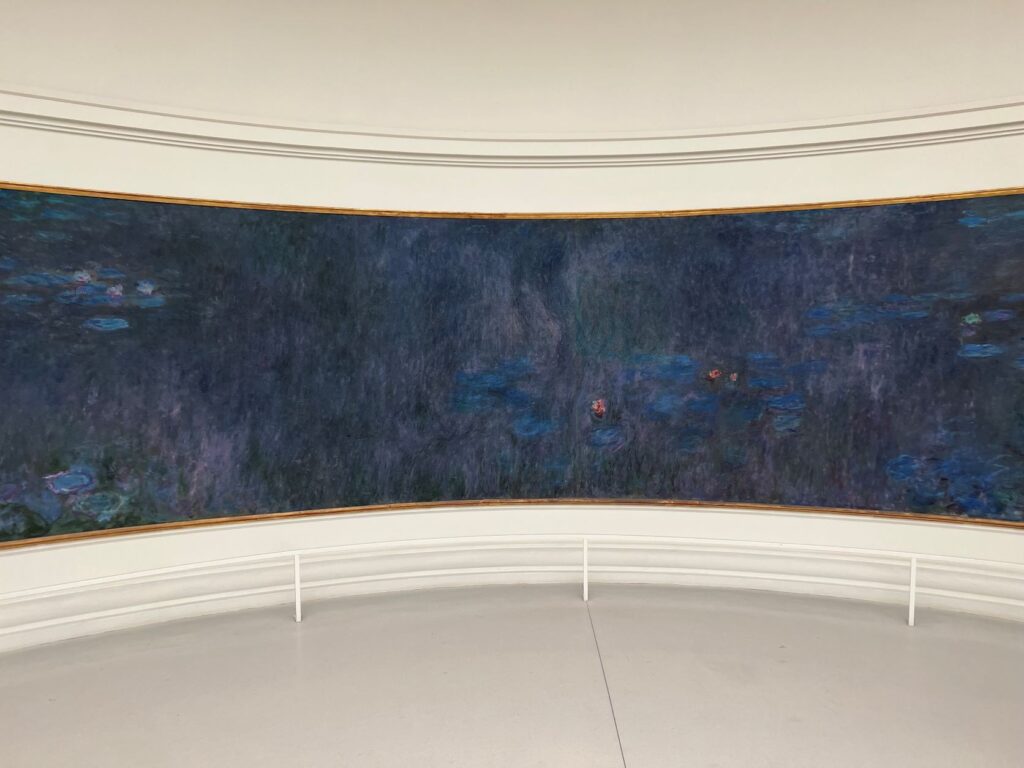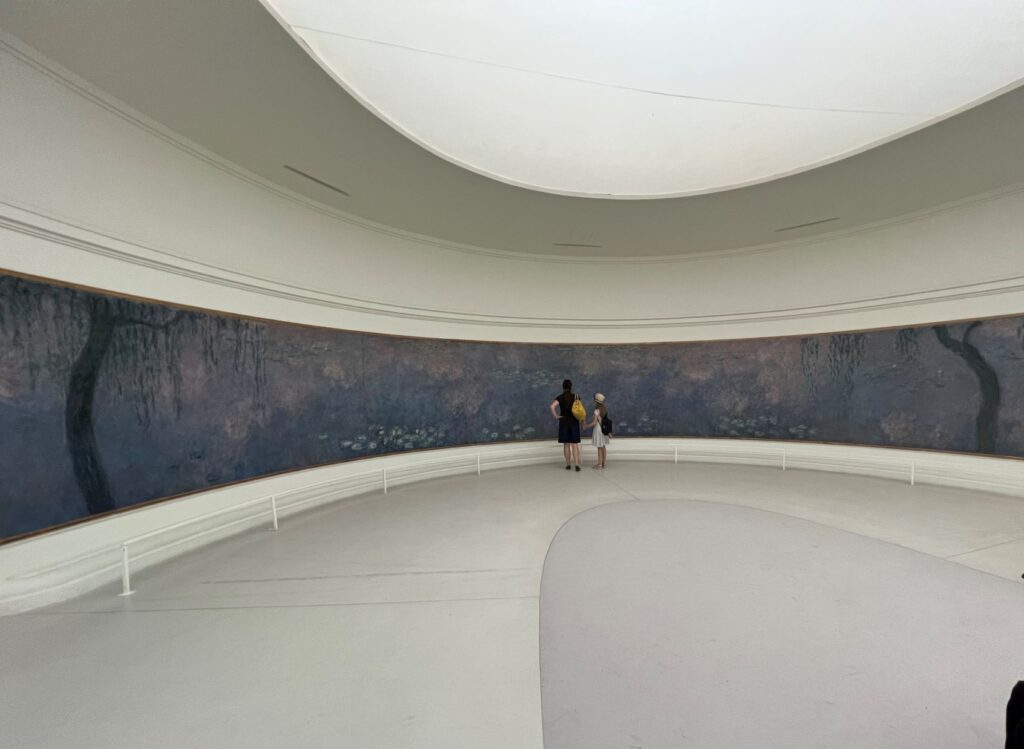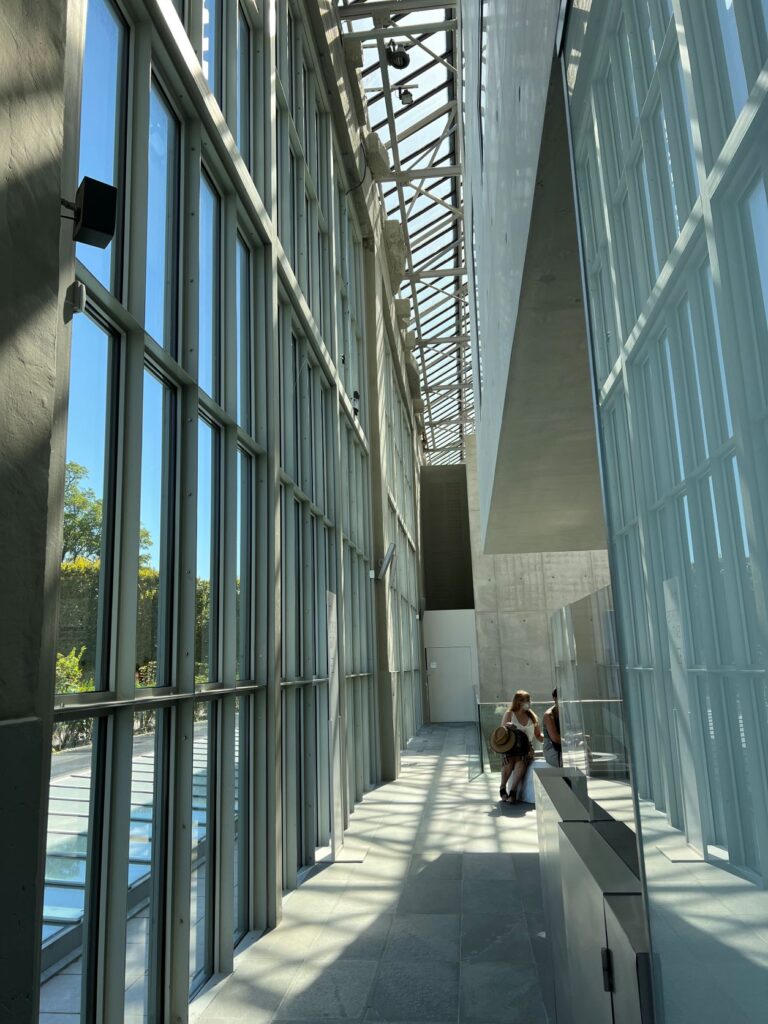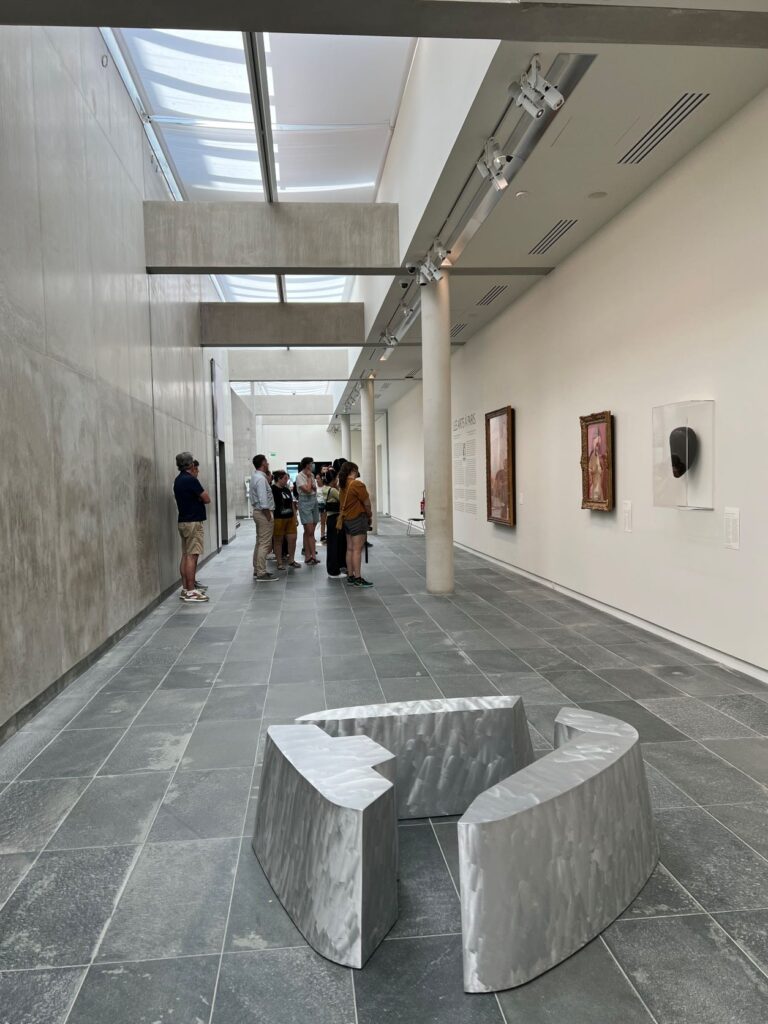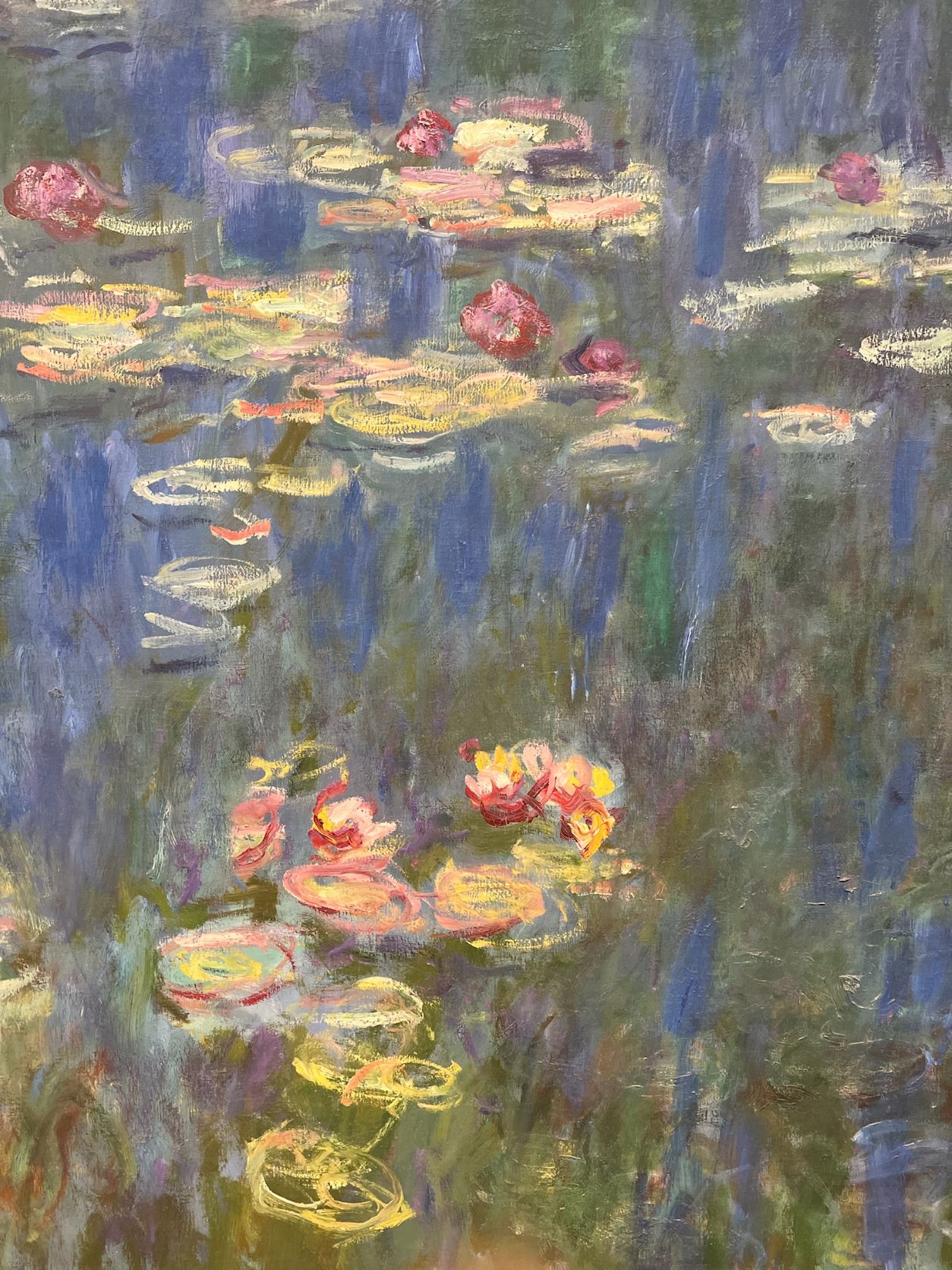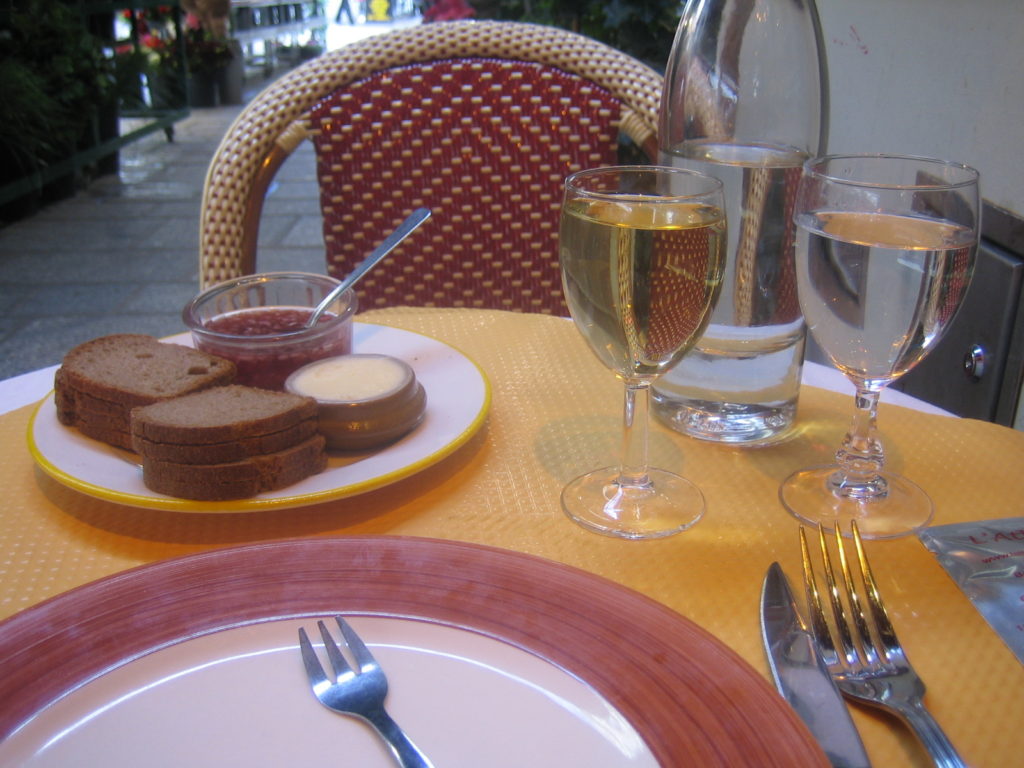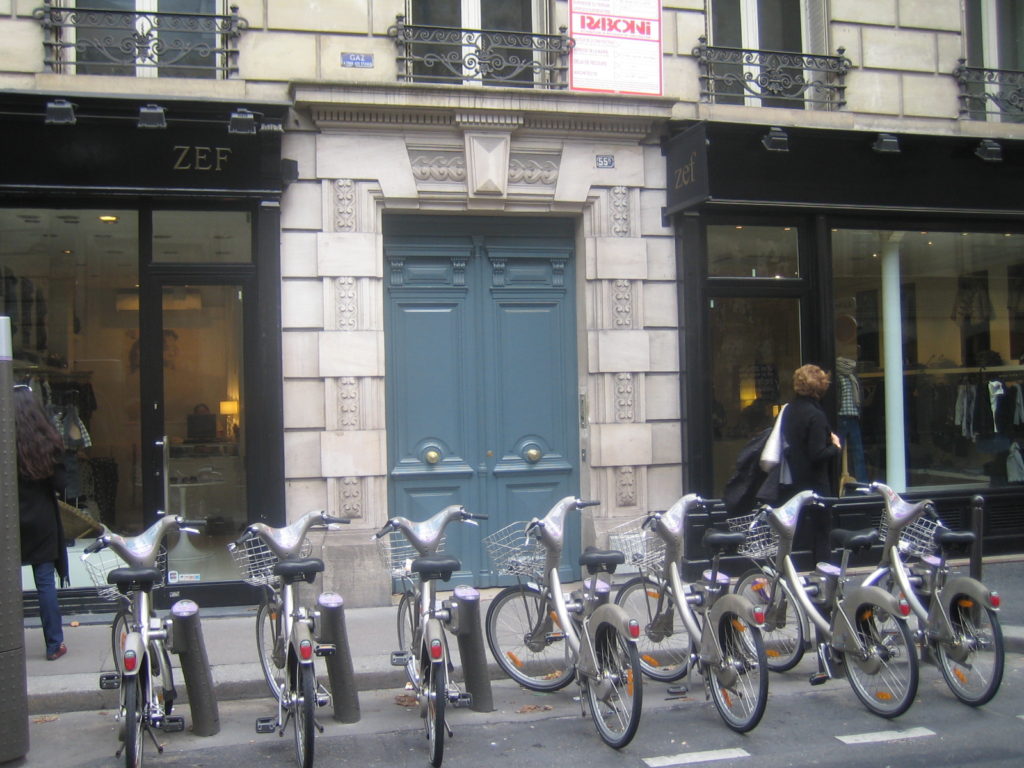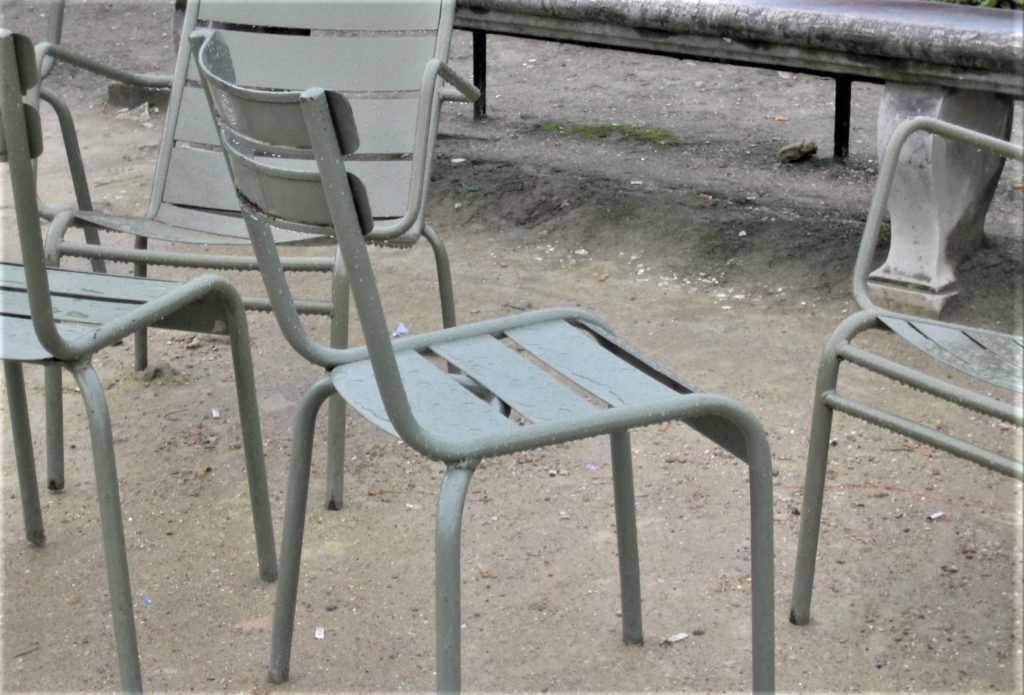If there is bright news about the Paris heat wave, it’s that the severe weather forced me inside to be enveloped in beauty. Having toured most of the museums over the years at a time that they weren’t teeming with tourists, I had been anticipating strolling all over the city, and being more impulsive about what caught my eye. However, all I could think about was Monet’s cooling water lilies and the chance to “chill,” but the website reservations were “sold out” for my entire stay. Undaunted, I decided to show up early this morning and take my chances since, for the first time, I was staying on the Right Bank and could make my way through the Jardins des Tuileries to the paintings’ permanent home in the Musée de l’Orangerie, hugging the narrow stretches of shade, to be there in 10 minutes. I walked right in!
The last time I saw the installation was in the late 1970s in the old museum where the canvases were displayed in dark chambers to protect the paint from sunlight. Monet had designed the entire exhibition, and each of the 8 panels from his Nymphéas series, before his death in 1926. However, the building was damaged during World War II, and the 1960s renovation robbed the paintings of the natural light that was essential to their full visual flowering. In 2006, the renovated museum brightened up the experience enormously. Today, under appropriate lighting, one clearly understands the progression of scenes, with sunrise hues to the east and sunset hues to the west, representing a continuum in time and space. Two large elliptical egg-shaped rooms, each with four panels, draw out the sense of infinity, which also was intrinsic to Monet’s creative intent.
The paintings are all the same height (6.5 feet) but vary in length to fit the rooms’ form and wrap the viewer in 2,153 square feet of art, or 328 linear feet. We are asked us to enter quietly and refrain from chatter, which was very fitting, as this was a truly a meditative experience. One sits on a bench, reflecting, then approaches each canvas closely to explore the deals, the layers of layers of brush strokes that Monet deftly executed to capture the light that made his Impressionist paintings so distinctive. I have visited his Giverny estate in Normandy and the Japanese-style water gardens that inspired this work over three decades, nearly 300 works in all and over 40 in large format. In the water gardens and on canvas, his main themes are consistently his love of the infinite, the passage of time and the interplay of reflections on water. Wherever the Water Lilies are displayed, the impact is stunning and indeed has a permanent “impression.”
L’Orangerie in its modern state features skylights at the entrance. Downstairs is the permanent collection – Les Arts à Paris – rooms upon rooms of significant art works by the pathfinders before and after Monet, from Impressionism to modern art. According to the exhibition narrative, The Jean Walter and Paul Guillaume collection was mainly put together by Paul Guillaume, a young passionate French art dealer. From 1914 to his death in 1934, he built up a rich collection of several hundred paintings, from Impressionism to modern art, as well as African and Oceanian artworks. Today, its Impressionist works are made up of 25 paintings by Renoir, 15 by Cézanne, 1 by Gauguin, 1 by Monet and 1 by Sisley; from the 20th century are 12 works by Picasso, 10 by Matisse, 5 by Modigliani, 7 by Marie Laurencin, 9 by Henri Rousseau, 31 by Derain, 10 by Utrillo, 22 by Soutine, and 1 by Van Dongen. Roaming through these well-lit rooms one can also pause on curved, hammered metal benches, another nod to the modern era that Impressionism ushered in. This is a museum about light, with architecture that not only enhances but reinforces the messages on the canvasses.
